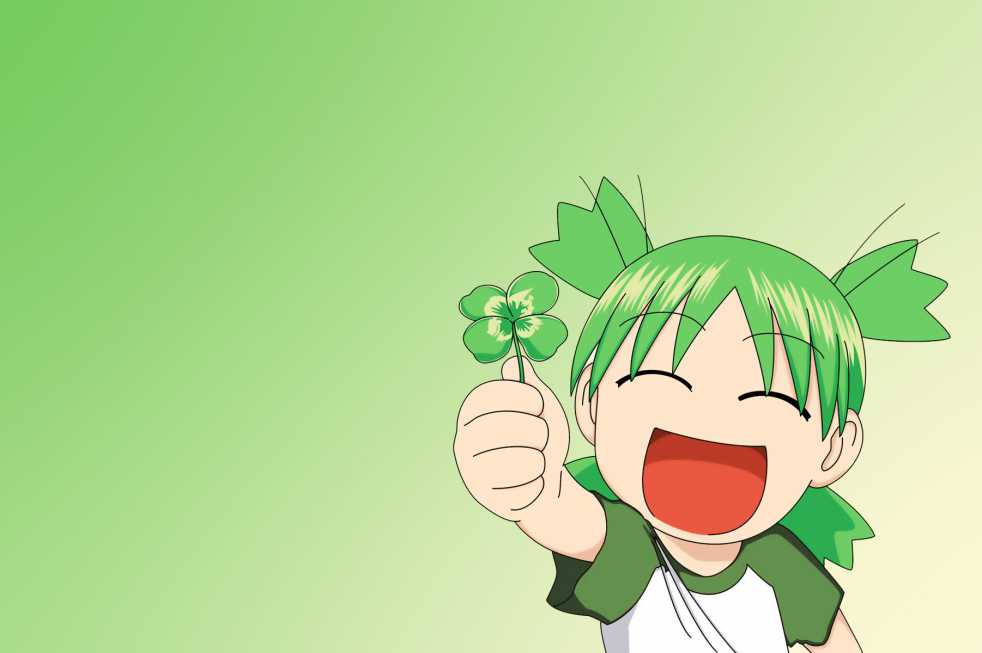Yotsuba&! by Kiyohiko Azuma centers around its titular character Yotsuba, a five-year old girl with green hair and pigtails, and the ways she interacts with the world. The series also involves her father, Koiwai, and her next-door neighbors and their three daughters.
However, such a cursory description fails to convey how much fun Yotsuba and her adventures actually are because it is something that needs to be experienced and read first-hand.
Manga (pronounced mahng-ga) has been around in Japan since the 1950s, eventually growing into the billion dollar industry it is today. Manga is prevalent all over Japan; most kids read it at least one point in their childhood and adults can be seen reading it as well.
There is usually a manga for all preferences with genres ranging from action-adventure to romance, sports and games, historical drama, comedy, mystery and horror. The choices are virtually endless. Some are directed towards children, while others contain explicit or mature content. Yotsuba&! can be categorized as a comedy and slice-of-life manga.
At first glance, Yotsuba appears to be an average girl with the exception that she brings an unnatural enthusiasm when approaching a situation she has no experience in. This, in her case, is almost everything normal people would find completely mundane or innocuous.
For example, in one chapter, Yotsuba sees an air conditioner for the first time and the first thing she exclaims is, “Does it make ice cream?!” Her sense of wonder is surprising, maybe even strange, at first, but her sheer enthusiasm and naiveté regarding her surroundings never fails to inspire affection or bring absolute hilarity to every scene with her defining innocence.
As the reader, it is very easy to be swept away by Yotsuba’s amazement at every little thing, even though to us these would just be ordinary activities.
It is this kind of reaction that Yotsuba brings chapter after chapter that never fails to deliver a smile to the reader’s face. The supporting characters also bring their own charm to the series as well such as Yotsuba’s father, who can be just as wacky as his daughter or Jumbo, a friend of the family who, as his name suggests, is freakishly tall and has his own hilarious moments.
The writing is clever and the humor is so endearing that anybody can laugh at Yotsuba’s antics. Azuma takes advantage of that nostalgic feeling of childhood so well that Yotsuba’s character can be relatable to people of all ages and backgrounds; this is the cause of the indelible charm of Yotsuba&!.
Azuma places readers in Yotsuba’s shoes instead of isolating readers as mere observers, and it is through this perspective that Yotsuba’s excitement can be so infectious. That is why a series like this can be so refreshing to read; it just takes every bad mood or feeling and blows it away like a breath of fresh air.
If Yotsuba&! were to have a Western counterpart, it would probably be closest to Bill Watterson’s Calvin & Hobbes. The main similarity between these two is that both series bring to readers that long-lost feeling of childhood and not as an observer, but as a participant.
Although the story centers around a five-year-old girl, adults would enjoy the manga more than children. It is not that anything is inappropriate or too difficult for kids to understand, but rather that the observant nature of the series on things such as life and happiness can really only be understood by adults.
Yotsuba&!’s message is to enjoy the little things in life. Even if readers doubt this is entirely possible, this manga certainly makes happiness seem not so implausible.
